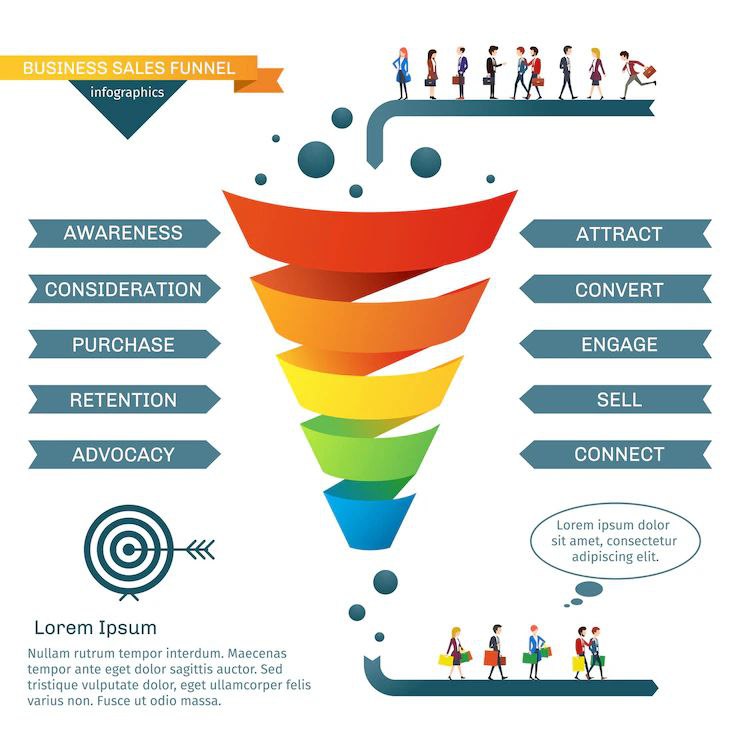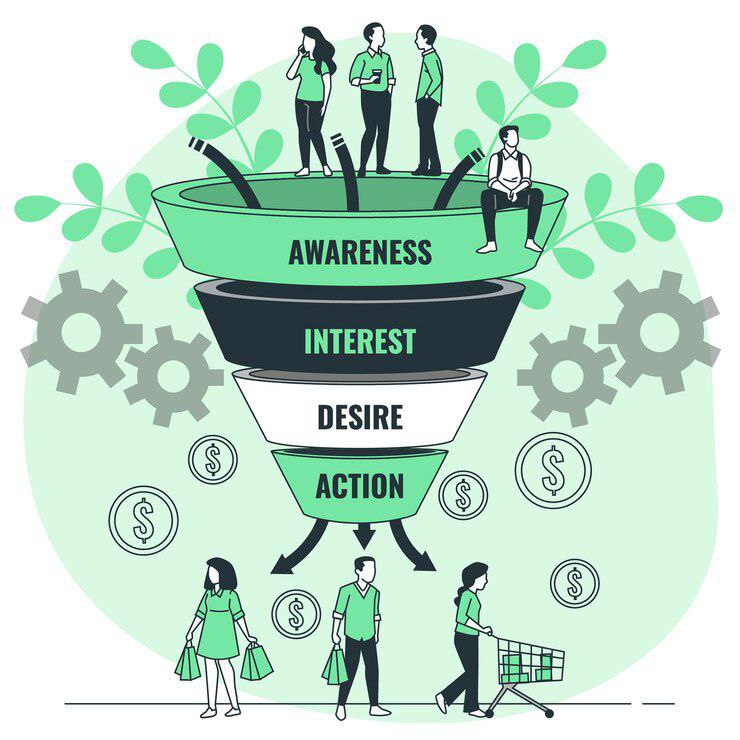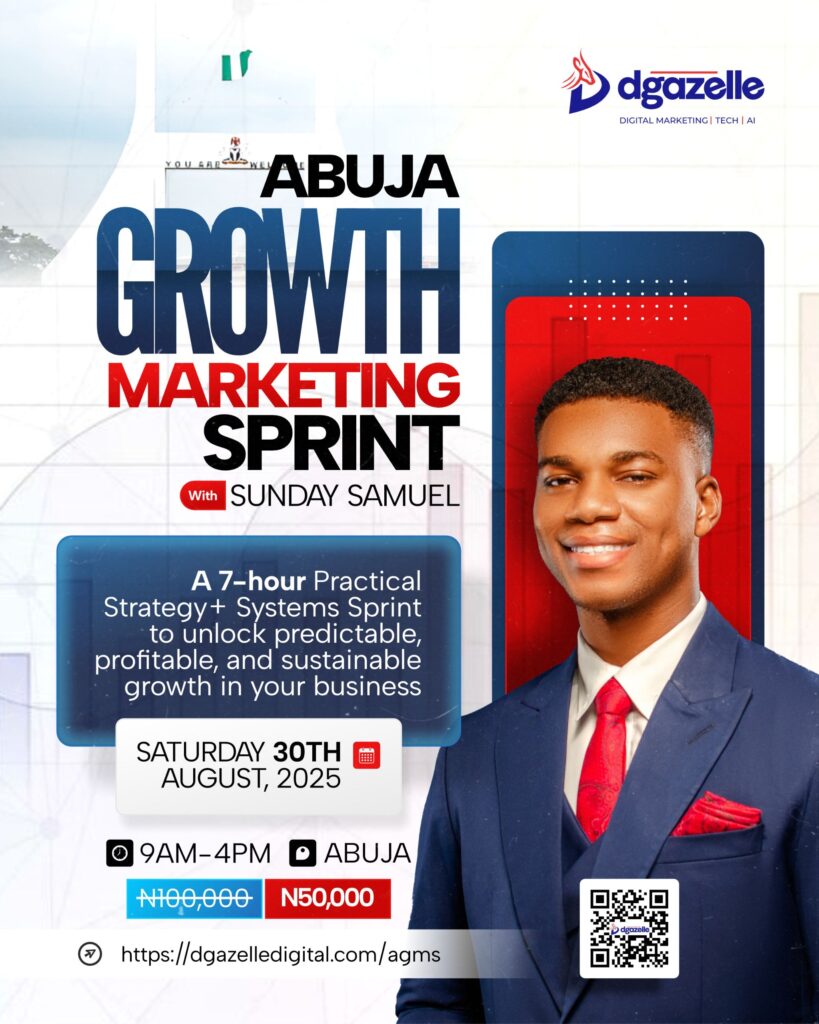You’ve invested in ads. You’ve set up a beautiful funnel. Traffic is coming in. But conversions? Not where they should be. Or worse —you’re getting the wrong kind of buyers. They either ghost after their first order, complain, or don’t buy at all.
As an e-commerce business owner, your worst fear is watching money go down the drain because your funnel isn’t converting the right people. And you’re not alone.
A study by Salesforce shows that 79% of marketing leads never convert into sales. The common reason? Poor lead qualification and misaligned funnels.
This post breaks down why your funnel isn’t converting the right audience and gives you a step-by-step framework to fix it, based on proven marketing principles and real-world data.
Why Your Funnel Isn’t Converting the Right People

image source: Freepik
1. Your Targeting is Too Broad
If you’re targeting everyone, you’re converting no one. Many e-commerce business owners run Facebook or Google ads with wide demographics, hoping to cast a large net. But broader targeting often results in attracting people who aren’t a good fit for your offer.
> Data Insight: According to HubSpot, 61% of marketers struggle with generating quality leads — not just quantity.
Your funnel should attract people who are already in the consideration or purchase stage of the buyer journey, not just casual browsers.
2. Your Messaging is Generic or Misaligned
Does your copy talk about the specific problems your product solves? Or is it filled with buzzwords and vague promises?
Messaging that fails to resonate with the buyer’s emotions, goals, or pain points will lead to low engagement and even lower conversions.
Example: “Get the best skincare today” vs. “Banish acne and feel confident in 7 days — dermatologist approved.”
The second line speaks to a pain point, offers a benefit, and builds trust — all at once.
3. Your Funnel Attracts Freebie Seekers
Many funnels use free offers or discounts to build email lists. While this can work, it often attracts people who are only interested in getting something for free — not those with buying intent.
If your funnel starts with “Get a 50% discount now!” without positioning the value of your product, you’re likely bringing in one-time or non-committed buyers.
4. Your Ad Promises Don’t Match the Funnel Content
Clickbait or overly hyped ad creatives might drive clicks but result in low conversions when the actual landing page doesn’t match expectations. This inconsistency breaks trust and increases bounce rates.
5. Poor Funnel Structure and User Experience
Even if your targeting and message are perfect, a clunky funnel structure can kill conversions.
> Fact: Portent found that website conversion rates drop by 4.42% for every extra second of load time between 0–5 seconds.
Issues like long forms, multiple steps, or slow pages increase drop-off. User experience is just as important as your copy.
Interested in booking a 45-minute free funnel review session? click here
What Makes a Funnel Convert the Right People?
1. A Clear, Specific Customer Avatar
High-converting funnels are built around a specific persona. Not “men aged 18–45,” but “college-age men with acne-prone skin who want fast-acting solutions before social events.”
You must define:
- Age, gender, location
- Goals and frustrations
- Buying habits
- Keywords and platforms they use
2. Consistency from Ad to Checkout
From the moment someone sees your ad to when they complete checkout, every message and experience should feel unified. This consistency builds familiarity and trust.
3. Qualified Lead Magnets
Lead magnets should act as filters — not just bait.
Example: If you’re selling organic hair care, offer a “Hair Type Test” or a “7-Day Scalp Reset Plan.” People who download this are likely serious about solving hair-related issues — not just grabbing a freebie.
4. Value-Driven Nurture Sequences
Buyers today want education and trust before they spend. Using email sequences, videos, and blog content to nurture leads helps convert cold traffic into warm buyers.
> Stat: Brands that educate through content generate 3x more leads at 62% less cost (Demand Metric).
5. Seamless UX Design and Speed
Optimize for mobile, reduce page load times, and simplify your checkout process. Most e-commerce traffic comes from mobile, and clunky navigation or broken pages will kill trust instantly.
How to Fix Your Funnel: Step-by-Step Framework
Step 1: Rebuild Your Ideal Customer Profile
Use surveys, interviews, and tools like Meta Audience Insights or Google Analytics to gather detailed information about:
- Who your best buyers are
- What pages they visit
- Where they drop off
- What language or benefits they respond to
From here, update all your targeting and messaging to reflect your most valuable buyer.
Step 2: Rewrite Funnel Copy Based on Pain Points
Go through your landing page, email flows, and checkout messaging and ask:
- Am I speaking to a specific problem?
- Am I showing results or benefits clearly?
- Do I use testimonials from people who resemble my target buyer?
Copy should make the reader feel, “This was made for me.”
Step 3: Improve Traffic Quality
Use lookalike audiences based on actual purchasers rather than just page visitors. On Google, refine keyword targeting to include high-intent phrases like “buy,” “best,” or “solution.”
Exclude people who’ve bounced quickly from your funnel using retargeting filters.
Step 4: Replace Weak Lead Magnets with Pre-Qualifiers
Avoid generic offers like “Get 10% Off.” Try:
- Quizzes (e.g., “What’s Your Skin Type?”)
- Free trials that require credit card entry
- A low-cost tripwire product ($5–$15) that shows commitment
These methods qualify your leads while building trust and commitment.
Step 5: Fix the Funnel Layout and Structure
Audit each step of your funnel:
- Does it load in under 3 seconds?
- Are CTAs placed above the fold?
- Are there distractions or confusing elements?
Use tools like:
- Hotjar to view heat maps and behavior
- Google PageSpeed Insights to test load time
- Shopify or ClickFunnels to create optimized flow
Step 6: Install Nurture Automation
Use automated email flows that activate when users:
- Abandon cart
- View a product and leave
- Download a lead magnet
Create a 5–7 day sequence that mixes education, testimonials, and urgency.
> Pro Tip: Email marketing ROI is $42 for every $1 spent (Litmus). Don’t ignore this goldmine.
Step 7: Track, Analyze, and Optimize
No funnel is perfect. The best marketers A/B test constantly.
Track:
- Conversion rate per step
- Ad spend ROI
- Drop-off rate
- Time on page
Test one variable at a time: headline, colour, CTA, pricing, layout, etc. Even small tweaks can lead to major breakthroughs.
Final Thoughts
An underperforming funnel doesn’t always need a complete overhaul — it needs realignment. Focus on attracting qualified people, speaking to their specific needs, and making their journey frictionless.
Your funnel isn’t just a tool — it’s a living asset that must evolve with your audience. Keep refining, keep testing, and above all, build with empathy and clarity.
Need help building a funnel that attracts the right buyers? Contact us today
At Dgazelle Agency, we specialize in creating high-converting websites, funnel design, and digital marketing strategies that help e-commerce owners sell smarter. [Let’s talk — book a free 15-minute strategy call today.]







